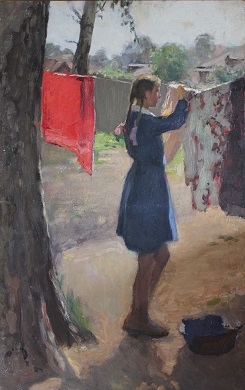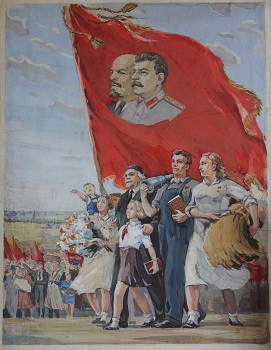

|
Socialist Realism
(or Social-Realism): an artistic movement born in the Soviet Union in 1934 and then accepted in all socialist countries of Central and Eastern Europe.
It was officially formulated for the first time by Maxim Gorky at the 1934 Congress of Soviet Writers in Moscow. Gorky stated that the artistic production should have a realistic and socialist content, following the Marxist-Leninist doctrine.
Among the first theorists of Socialist Realism, we can find Anatoly Lunacharsky and Aleksandr Voronskij. Following the Andrei Zhdanov’s doctrine, Social-Realism has been extended to all artistic disciplines. The program of Social-Realism was built upon elements from the nineteenth-century Realsim combining with soviet academicians, publicists and aestheticians. The recurring themes were/are the class struggle, the alliance between workers and peasants, the history of the Labor movement, the daily lives of workers and so on.
Soviet Impressionism:
French Impressionism was born from the idea of getting rid of a serious and
scholar point of view and simply paint reality, the daily life as it was, with
the artist’s personal vision and feeling. Unlike the French movement, Russian
Impressionism can be defined as the “impressionism of the working class”, since
it is all about focusing on the representation of workers and their daily
environment; The movement reached its peak between the 1950’s and 70’s.
Zhdanovism:
Soviet cultural policy developed by Andrei Zhdanov, Central Committee Secretary,
in 1946. It stated that Soviet artists of Communist countries had to conform
their creative work to the party line and any cultural expression had to serve
the political goals of communism and the Soviet Union. All the Soviet artistic
production was framed by this rigid aesthetic policy. Artists had to create only
what was “politically correct”, to make their creations symbols of a moral and
scientific vision of what was considered “Good” by the party.
|